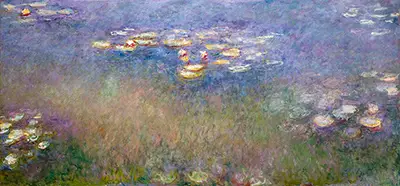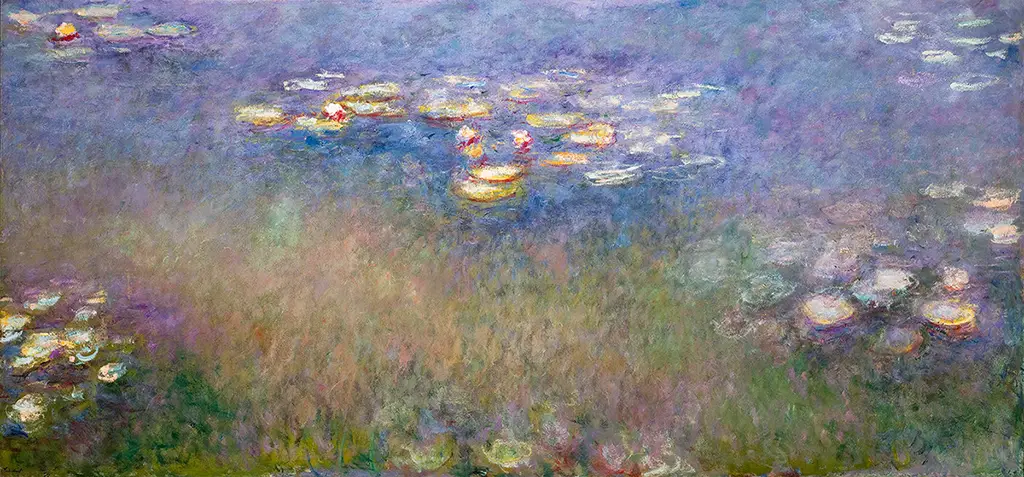This series of panels was actually kept in the artist's studio until 1950, many years after his death. Sadly, it was decided to sell the panels separately, which led to them being owned by the St. Louis Art Museum and the Nelson-Atkins Museum in Kansas City, Missouri and the Cleveland Museum of Art. Whilst these are great institutions who were entirely deserving of these items, it is unfortunate that the overall piece is rarely seen together. Monet himself was a keen gardener who carefully planned the water lily pond which was built on an extension of land that he purchased several years after first moving in to this property. His ambitious project would eventually require six full time gardeners to maintain his initial work, particularly in his later years as his own health started to deteriorate.
Thankfully, the items were re-united at the Royal Academy in London, UK as part of an exhibition titled Painting the Modern Garden which drew attention to the role of gardening and art, particularly within the impressionist movement. The room in which they were placed together had a curved construction which allowed all three panels to lean towards the viewer, helping to engulf oneself into the original garden. These later pieces have no real context, and are therefore slightly more abstract in composition. One cannot tell how wide the pond was, nor where it interacts with other parts of the garden, with this being more of a straight display of colour, light and form and is satisfied to be considered just that. In total he produced around 250 paintings around the lily pond, with many of them making use of this close-up technique of specific elements.
Monet planted these Agapanthus plants around the banks of his pond. They are a native of Africa, but were not the only imported species that he used in his garden. You will find the likes of wisteria, irises and bamboo as well, plus also the imported architecture style of his bridge which was inspired by the artist's studies of Japanese culture. He would later focus specifically on these plants in smaller paintings, some of which can be found at MoMA, as part of their impressive display of the artist's work. Monet remains one of the best represented European artists within American art institutions, but thankfully with the large number of paintings and drawings that he created during his lifetime, there is plenty to go round.



